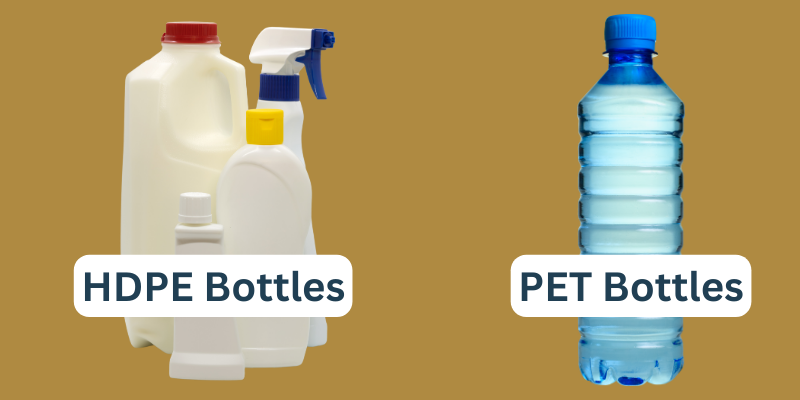HDPE and PET bottles are both widely used for packaging various products, from beverages to cleaning agents. HDPE is a plastic material known for its sturdiness and durability. On the other hand, PET is another type of plastic known for its clarity, lightweight nature, and recyclability.
-
HDPE (High-Density Polyethylene):
-
Characteristics:
- HDPE is a thermoplastic polymer with a high strength-to-density ratio.
- It is known for its toughness, chemical resistance, and relatively low cost.
- HDPE is opaque and has a waxy texture.
- It is resistant to moisture and chemicals, making it suitable for a variety of products.
-
Common Uses:
- HDPE bottles are commonly used for packaging various products such as milk, juice, detergent, shampoo, and motor oil.
- It is also used for containers for household chemicals, industrial products, and some types of food.
-
Recyclability:
- HDPE is widely recycled, and recycled HDPE is used to manufacture a variety of products, including more HDPE bottles.
-
-
PET (Polyethylene Terephthalate):
-
Characteristics:
- PET is a clear, lightweight, and strong plastic with excellent transparency.
- It has good barrier properties against oxygen, carbon dioxide, and moisture.
- PET is commonly used for products that benefit from its clarity, such as beverages.
-
Common Uses:
- PET bottles are widely used for packaging beverages like water, soft drinks, juices, and sports drinks.
- It is also used for food packaging, such as salad dressings, condiments, and peanut butter.
- PET is a popular choice for single-use water bottles due to its lightweight nature.
-
Recyclability:
- PET is highly recyclable, and recycled PET (rPET) is commonly used to produce new PET bottles and various other products.
-
Read More-https://regentplast.com/hdpe-vs-pet-bottles-making-the-right-packaging-choice/

